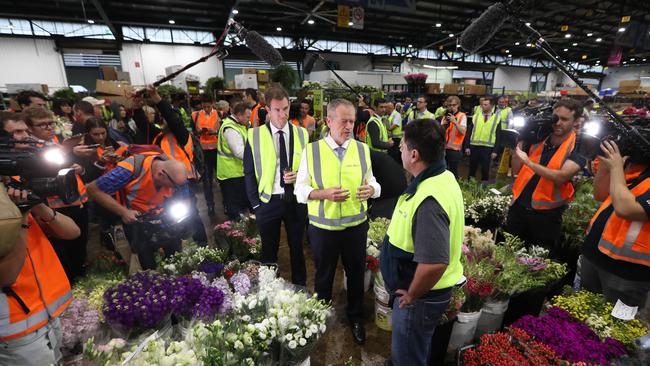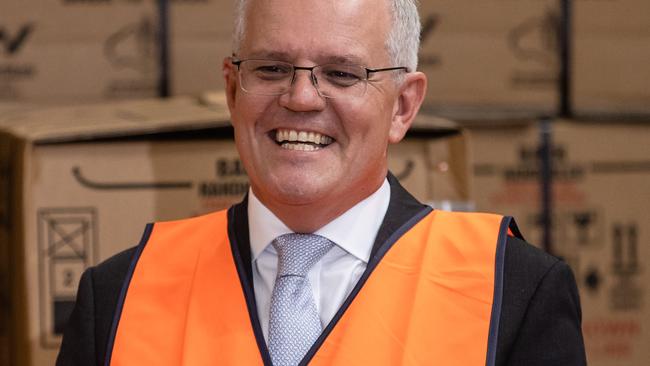The key ingredient Scott Morrison’s election campaign is missing: hostile voters
Scott Morrison might have enjoyed a better week than Anthony Albanese, but his election campaign is still missing an important ingredient.
On day one of the last election campaign in 2019, I was in the media pack following then-opposition leader Bill Shorten.
Mr Shorten kicked things off with a casual stroll through the Sydney Markets – where he was swiftly confronted by a disagreeable voter.
Florist Rick Mileto grilled the Labor leader on his promise to limit negative gearing, with the entire media scrum (and a considerable battery of TV cameras) watching.
“Everything is going against it,” Mr Mileto told Mr Shorten, imploring him to ditch or at least delay the policy.
He did not find Mr Shorten’s answers convincing.
Stream more on politics with Flash. 25+ news channels in 1 place. New to Flash? Try 1 month free. Offer ends 31 October, 2022 >

That moment, on the very first morning, set the initial tone of the campaign. And you will recall that negative gearing was one of Mr Shorten’s more consistent headaches right up until election day.
But their conversation was also a genuine interaction involving one of the major party leaders and a member of the public who wasn’t already on his side. In a campaign environment where so many events are designed to minimise risk, such interactions are precious.
After all, these campaigns are supposed to be about the leaders winning over undecided voters, right? They’re meant to test the parties’ ideas. The folks who have already decided to support either Scott Morrison or Anthony Albanese don’t need to be convinced.
A week into this campaign, we have yet to see anything comparable from Mr Morrison. He has spent the entire week in friendly company, shielded from any unpredictable entanglements with members of the public.
I’m going to run you through the full list of campaign events we’ve attended with Mr Morrison so far.
On Monday, he visited a canning company in Gilmore, which had prepared a special can label themed around “Scomo’s Strong Economy”. He then toured Air Affairs Australia’s advanced manufacturing centre.
On Tuesday, Mr Morrison showed up at the Rheem Australia complex in Parramatta, then visited Hogan Engineering further west. He rounded things out by meeting some assistance dogs and their carers.
On Wednesday, the Prime Minister toured a manufacturing business, Spanset Australia, before flying to Geelong to check out an oil refinery, and then driving to a sports stadium in Torquay to meet some under-12 basketball players.
On Thursday, he met new Tasmanian Premier Jeremy Rockliff in person for the first time at a hotel in Launceston, toured a saw mill, and then spoke at an RSL memorial club. His day of campaigning was cut short by the car accident involving his security detail.
And on Friday – which was understandably low key, given the public holiday – Mr Morrison attended a church service, a Passover service and the Royal Children’s Hospital’s Good Friday Appeal.
(The Prime Minister was confronted at a private function with the media on Tuesday night, but that wasn’t the sort of genuine, spontaneous interaction I’m talking about, as the individual in question was a Labor supporter who’d snuck in.)
We should acknowledge that many of these events were framed around policy announcements. Mr Morrison faced question at media conferences each day. And he certainly did meet some voters – at each private business, for example, he spoke to a handful of employees to learn about the jobs they were doing.
But there is a clear difference between touring a friendly business and, for instance, walking through a shopping centre, where you have no idea what the people you run into will say to you (or about you).

I think we’ve waited long enough before writing this article to say that the change in tactics here is clear, and striking.
In 2019, Mr Morrison frequently braved higher risk settings – shopping mall visits, streetwalks and the like – exposing himself to the prospect of angry voters confronting him.
This time he is sticking to controlled, relatively scripted settings.
Perhaps that will change in the coming days. One certainly hopes so. Because whatever the reason for the Morrison campaign’s approach so far, the fact is we’ll learn far more about his agenda if the public is allowed to scrutinise it to his face.
The Prime Minister can’t avoid hostile voters forever. The longer he tries, the more conspicuous it gets.
Originally published as The key ingredient Scott Morrison’s election campaign is missing: hostile voters



